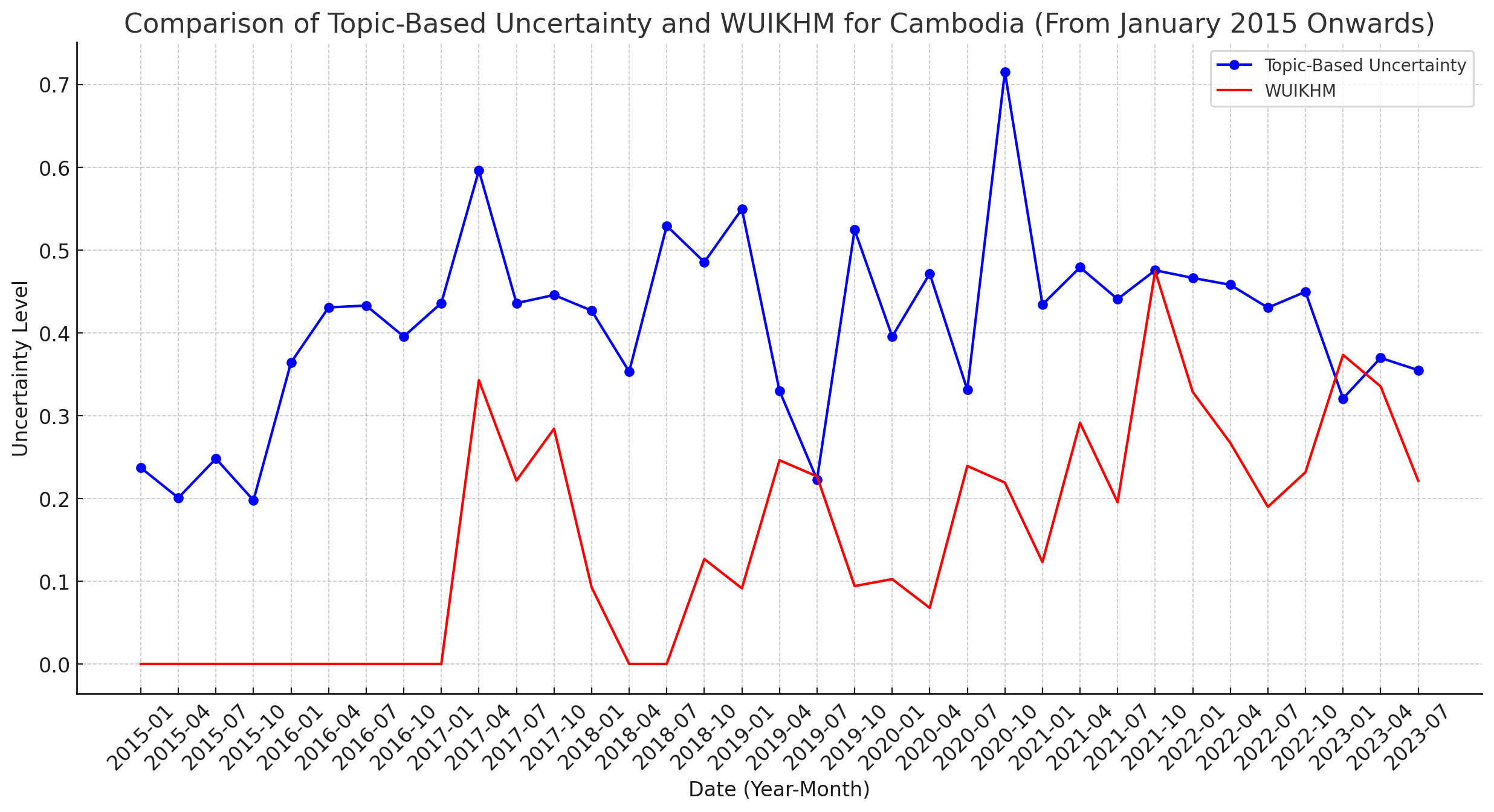Comparative Analysis#
In this section, we delve into a detailed examination of the topic-based uncertainty measure and the World Uncertainty Index (WUIKHM). This exploration brings to light the inherent differences in methodologies and underscores the strengths of the topic-based approach, which is central to our research.
Methodological Divergence#
The methodological divergence between the topic-based uncertainty measure and the World Uncertainty Index (WUIKHM) is quite pronounced. Our research primarily focuses on the topic-based measure, which employs advanced text analysis techniques, transcending the limitations of predefined keywords. This approach captures a broader and more nuanced spectrum of uncertainties within texts, identifying subtle themes and variations in the narrative. In contrast, the WUIKHM, following the methodology of the Economic Policy Uncertainty Index (EPU), relies on the frequency of certain keywords related to economic and policy uncertainty in news articles. While effective for its simplicity and replicability, this method may overlook various non-policy-related uncertainties, a gap that our topic-based measure aptly fills.
Scope and Adaptability#
The topic-based uncertainty measure exhibits superior scope and adaptability. It is flexible and context-sensitive, capable of adjusting to new themes and issues, thus offering a more comprehensive depiction of uncertainty. The WUIKHM, though straightforward, is confined to economic policy aspects. Our approach, with its heightened context awareness, mitigates the risk of data misinterpretation due to unrelated keyword occurrences, a potential challenge for WUIKHM due to its fixed keyword dependency.
Capturing the Dynamic Nature of Uncertainty#
Our topic-based measure effectively captures the dynamic nature of uncertainty, especially in rapidly evolving scenarios like the COVID-19 pandemic. It identifies diverse uncertainties more adeptly than the WUIKHM, which, while valuable in its focus on policy-related uncertainties, may not be as agile in capturing uncertainties extending beyond policy matters.
Comparative Trend Illustration#

Fig. 2 Comparison Plot of Topic-Based Uncertainty and WUIKHM#
Figure 2, in our research, offers a comparative illustration of trends between our topic-based uncertainty measure and WUIKHM from January 2015 onwards. This visual comparison underscores the variations in both methodologies over time, emphasizing how each captures different facets of uncertainty.
Multifaceted View of Uncertainty#
The findings from our topic-based approach reveal a multifaceted view of uncertainty, covering policy, societal, technological, and environmental aspects. This comprehensive analysis, juxtaposed with the WUIKHM, demonstrates the robustness of our method in capturing uncertainty in diverse contexts, particularly when new uncertainties emerge.
Contextualization through Anecdotal Evidence#
Anecdotal evidence from news articles, particularly between October 1 and December 31, 2020, provides context to the observed high uncertainty scores. This evidence corroborates with the broader themes identified in our comparative analysis, encompassing a range of factors from the COVID-19 pandemic to socio-economic conditions. These instances, as depicted in Figure 2, enrich our understanding and complement the findings from the comparative analysis.
This comparative analysis enriches the understanding of uncertainty by encompassing both policy-related and broader socio-economic factors. It underscores the efficacy of the topic-based approach in uncertainty analysis, highlighting its flexibility and adaptability as essential tools in addressing new and unforeseen challenges.